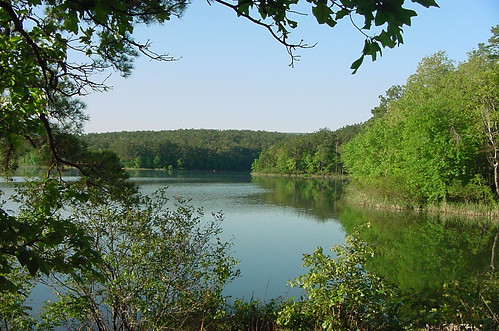
This post is part of the Science Tuesday feature series on the USDA blog. Check back each week as we showcase stories and news from the USDA’s rich science and research portfolio.
From South Carolina’s coastal plain to the North Carolina mountains to the tropics of Puerto Rico to the southern Sierra Nevada region of California, climate change is on the minds of forest planners.
That’s because U.S. Forest Service planning teams in these areas are among the first to revise their land and resource management plans under the 2012 Planning Rule. To help them in their planning, land managers from the Francis Marion, Nantahala, Pisgah, El Yunque, Inyo, Sequoia, and Sierra national forests will turn to a web-based tool known as the Template for Assessing Climate Change Impacts and Management Options.
Forest Plans help guide the management of national forests and are typically revised every 10 to 15 years. The plans help ensure that national forests and grasslands continue to meet the requirements of the National Forest Management Act—for clean air and water, timber and other forest products, wildlife habitat, recreation and more.
The 2012 Planning Rule requires robust and transparent public engagement, as well as forest plans rooted in ecological sustainability and contributions to key social, cultural and economic conditions. The first national forests to undergo management plan revisions under the 2012 Planning Rule represent diverse landscapes across the United States, and their pioneering forest planning teams demonstrate strong leadership and relationships with collaborators.
With the 2012 Planning Rule comes a new challenge: planning teams must complete rapid assessments of ecosystem conditions on national forests and the effects on those ecosystems from stressors, such as climate change, based upon existing best available scientific information. Developed by Eastern Forest and Western Wildland Environmental Threat Assessment Center researchers and partners, the web-based tool provides science-based climate change information and projections specific to each forest. This tool – one of many used by forest managers – supports planning teams, as well as stakeholder groups and the general public engaged in future forest management through collaborative processes envisioned by the Planning Rule, which provides a modern, adaptive framework that is responsive to natural resource management issues unique to each forest.
For example, since the Francis Marion National Forest’s management plan was last revised in 1996, new disturbances, including climate change impacts, have emerged as issues of concern. The Francis Marion National Forest recently released a draft assessment, including climate change information and projections generated with the help of the tool, for public review and comment. As other assessments are completed later this year, forest managers will use the tool to make revisions to the plan to ensure that the forest will be able to provide, in the face of a changing environment, the critical goods and services that people across the nation expect and enjoy.
